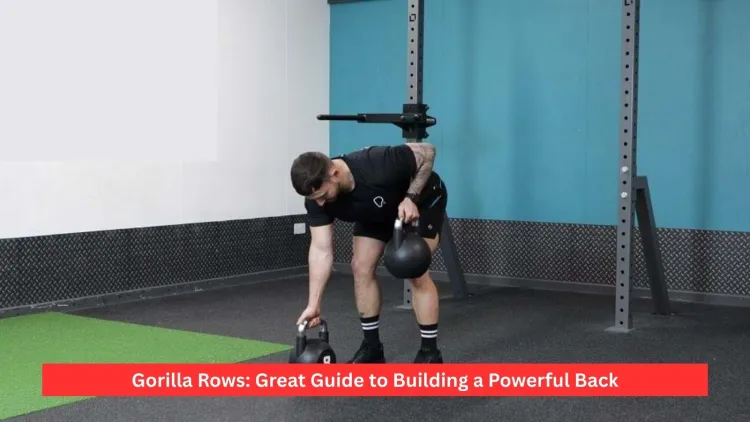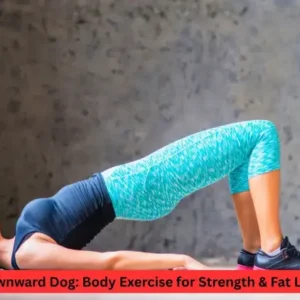Gorilla rows should feature heavily in your training regime, should you desire an increase in size and strength of your upper body, as well as making it more athletic. The exercise is so called because gorillas move their arms in a certain manner, which means that it is powerful, confined, and sturdy. Gorilla rows are dumbbell pulling, ninety coupled full-body stabilisers, which are equally suitable for every level of lifters. In contrast to the machine rows or even your barbell rows, gorilla rows challenge both your core and your stabilisers, and enhance better symmetry on your left and right sides.
- What Are Gorilla Rows?
- Muscles Worked
- Benefits of Gorilla Rows
- How to Perform Gorilla Rows Step by Step
- Common Mistakes to Avoid
- Variations and Progressions
- Gorilla Rows vs Other Exercises
- Programming Tips
- Safety & Precautions
- Additional Insights
- Nutritional and Supplement Advice
- Interesting Gorilla Facts in Motivation
- Final Thoughts
- Frequently Asked Questions
What Are Gorilla Rows?
Gorilla rows are a similar type of bent-forward dumbbell row that is done with one hand that holds both dumbbells, and hands that alternate pulling. They resemble a plank-dumbbell row, which is dynamic and unilateral. Because you pull one arm at any given time and keep the other arm straight, gorilla rows allow your body to resist any rotation, a skill essential to sports, powerlifting, and even posture in real life.
They are also highly versatile: you can have gorilla rows in the gym with dumbbells or kettlebells (or at home with anything that has weight). Gorilla rows are easy on the lower back compared to heavy barbell rows, which are harder on the core and grip and are more easily done by many lifters.
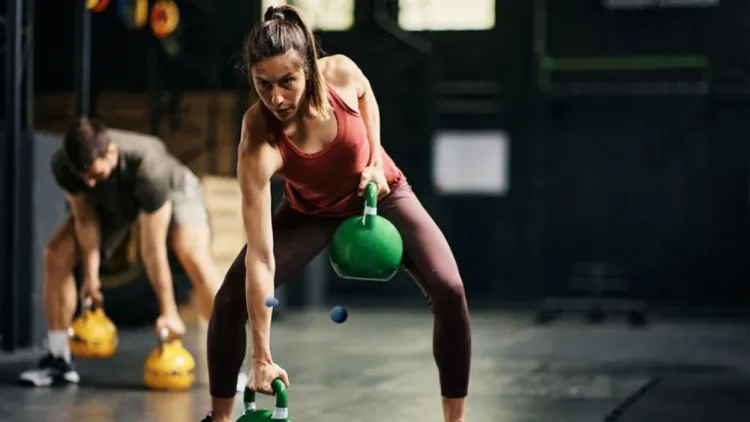
Muscles Worked
Gorilla rows enlist a lengthy list of muscles in your back, arms, and core. The prime movers include:
- Latissimus dorsi (lats): Pulling strength and body width of the body.
- Rhomboids and trapezius: These build up posture and add upper back.
- Rear deltoids- Textbook support shoulder joint stability.
- Biceps brachii: Aid in every draw.
- Core stabilisers (rectus abdominis, obliques, and erector spinae): Have your torso stationary and thin the waistline in the long run by using a minimal increase in support.
- Wrist and grip muscles: Increase muscle power and endurance in the hand.
Due to the static hip-hinge, glutes and hamstrings are also engaged, albeit lightly, by gorilla rows and enable a semi-full-body effect.
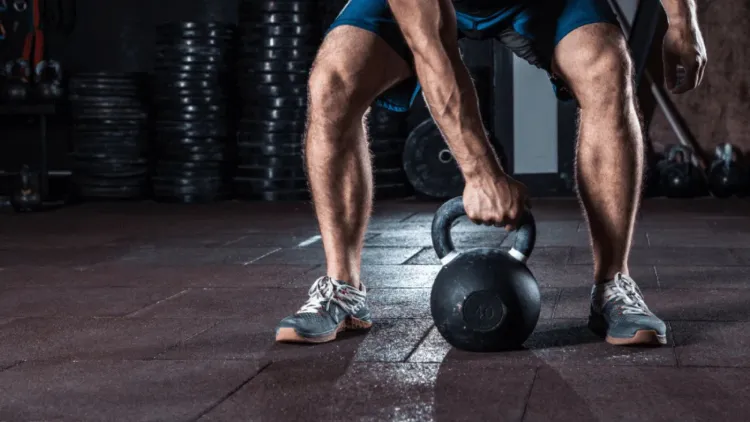
Benefits of Gorilla Rows
1. Unilateral Strength and Balance
Gorilla pulls on one arm at a time to correct imbalances and make both sides grow equally. This would minimise the chance of injury and enhance your performance on compound exercises such as deadlifts or pull-ups.
2. Flatter Toned Abdomen and Diamond Waist
When you are hanged back in position with two weights, your obliques and transverse abdominis hold back. In the long run, this stabilising will make you taller, and your waist will be even thinner.
3. Improved Grip Strength
Holding one dumbbell still and the other in motion improves grip and forearm growth essential to athletes, climbers or anyone attempting to gain pulling abilities.
4. Increased Back Thickness and Width
In contrast to most isolation exercises, a gorilla row strengthens your whole upper back, resulting in a developed V-shaped physique.
5. Also, More Mobile than Static Rows
Bended over rows are great, but gorilla rows can serve to complement their anti-rotation and coordination. This qualifies them arguably as better in functional fitness and in sports performance.
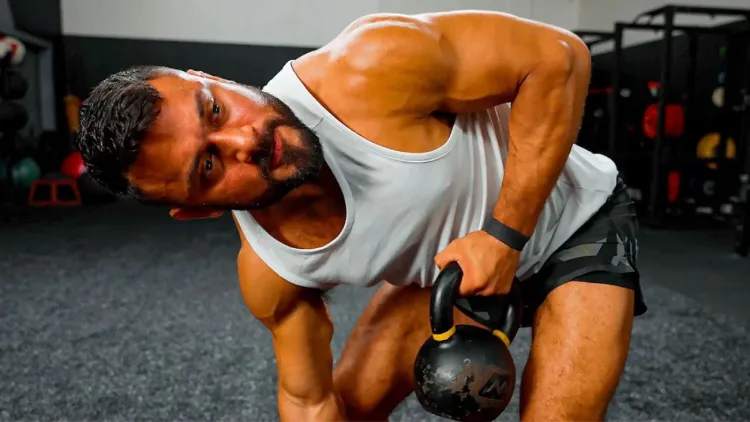
How to Perform Gorilla Rows Step by Step
1. Setup
- Put the two dumbbells or kettlebells at shoulder level.
- Feet slightly broader than hips.
- Bend at your hips such that the torso is near parallel to the ground.
- With palms to each other, hold both dumbbells.
2. Starting Position
- It is necessary to now engage the core, but both the back and the arms hang straight down.
- Keep the neck in a neutral position.
3. Execution
- Hold the right dumbbell toward your rib cage, keeping your elbow in proximity to your chest.
- Stop momentarily at the top, squeezing the lat and the shoulder blades.
- Bend to the left slowly and keep changing to the left side.
- Keep taking turns in a following rhythm.
4. Breathing
- Inhale and suck in the dumbbell.
- Inhale as you lower it down.
Common Mistakes to Avoid
- Rounding the Back: You should always lift at the hips and make a neutral spine.
- Using Too Much Weight: The weight should be heavy enough to be a challenge, but not too heavy to cause lower back strain: begin with less weight than in the barbell row.
- Romanticising the Torso: The object is anti-romanticisation–solidify your midback.
- Jerking the Weight: Modulate movement in order to make the most of muscle working.
- Forgetting Warm-Ups: First, warm up your back and your core by doing some light rows or band pull-aparts.
Variations and Progressions
- Kettlebell Gorilla Rows: Kettlebells have an offset weight, which complements the core demand.
- Deficit Gorilla Rows: To increase the stretch and range of motion, raise your feet.
- Tempo Gorilla Rows: Reduce the downward movement to gain additional tension.
- Single Dumbbell Gorilla Rows: The Preferred dumbbell here is one, and support your hand that is free on a bench at the beginning stages.
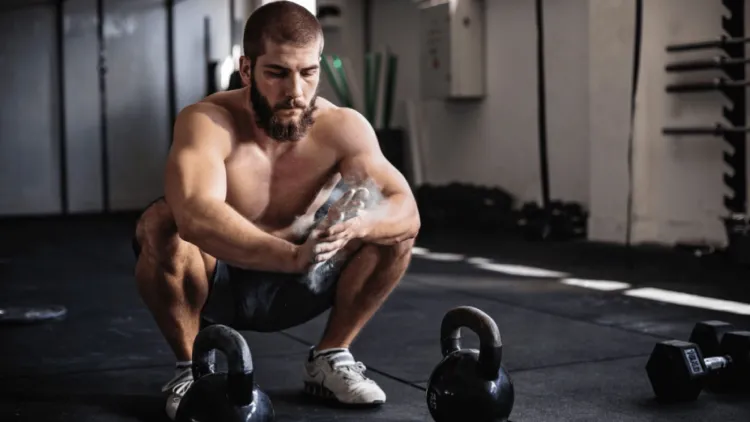
Gorilla Rows vs Other Exercises
Gorilla rows, in comparison to bent-over rows, provide the difficulty of anti-rotational movements and are usually more joint-friendly. Whereas bent-over rows permit carrying heavier loads, gorilla rows may be superior in core engagement, grip strength and reducing asymmetry.
Gorilla rows are also combined with some other exercises, such as spider presses, Turkish presses or dead bug workouts to achieve a complete core and back workout. This assembly presents maximum strength and stability.
Programming Tips
- Sets and Reps: 3- 4 sets of 8-12 reps of each arm, or 4-5 sets of 6-8 reps of each arm.
- Weight Selection: Select a weight with which you can row in extended form without moving the torso. First lifters can use 10-15 kgs of dumbbells; when one is advanced, the dumbbells can be increased.
- Frequency: Once or twice weekly is most preferable. Excess might put a strain on your lower back.
- Cutting: Height (push-ups, bench press), or full-body exercises.
- Progressions: Introduce a progressive change of load or repetitions, but maintain form.
Safety & Precautions
- Support your back, majority, and city prior to heavy exercising.
- When the gorilla rows are causing pain to your lower back, decreasing the weight or sitting on a bench that is supported by the chest is recommended.
- Bend knees slightly or tilt hips backwards to minimise the load on the spine.
- Without explosive breathing, holding your breath for some breaths will bring the spine steady.
Additional Insights
Do Gorilla Rows Work Abs?
Yes. Although they are basically a back exercise, gorilla rows make your abs and obliques pull and push isometrically. This antimuscular rotation is perfect for the development of the core and control of the waist.
Can Gorilla Rows Be Used to Lose Weight?
Single gorilla rows will not melt fat, but since they are both compound moves, they burn more calories compared to isolated moves controlled by their muscles. Gorilla rows, in tandem with a good diet, and walking/cardio (even 20 minutes each day), help in losing fat and improving fitness.
Can beginners do Gorilla Rows?
Absolutely. Begin with lightweight and the slightly greater angle of the trunk, and increase to heavier weight while still lowering the angles as your strength and steadiness improve.
At-Home Alternatives
In the event of non-possession of dumbbells, use the filled water bottles, sandbags and resistance bands. You can also perform single-row bracing on a chair or a table.
Nutritional and Supplement Advice
Nutrition before exercise is of great significance to output. An ideal protein and carb meal an hour to two hours before training provides you with that training time.
- Creatine: 35g a day strengthens and improves recovery.
- Pre-Workout Supplements: Can be helpful to increase energy, particularly reputable brands, and take the dosage as it is advised. Plz experienced pre-workouts do not elevate testosterone; however, a good workout does elevate hormones by natural processes.
- Hydration: Consuming an adequate amount of water supports the delivery of creatine and essential nutrients.
Interesting Gorilla Facts in Motivation
- Gorillas are amazingly strong in their arms, and testosterone levels are high when compared to their size.
- As their inherited method of locomotion (so-called gorilla walking), they have recourse to knuckle walking.
- Gorilla exercises are a reproduction of this primal force and stability.
- Gorillas can also be quite strong, though their size does not imply that they can feed mostly on small animals, as they are mostly vegetarian.
- They are several times stronger in their grip than that of a human being, and the grip benefits of gorilla rows are inspirational.
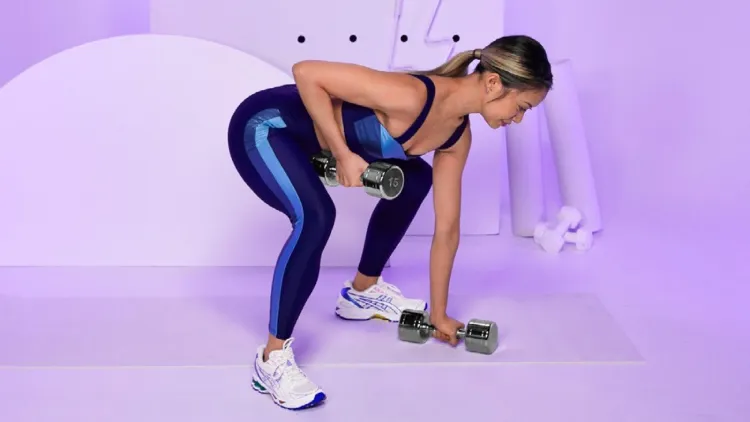
Final Thoughts
The gorilla rows are considered to be one of the most practical and good back exercises that one can include in their routine. They work your lats, traps, rhomboids, rear delts, core, and grip simultaneously, as well as increase balance and position. Gorilla rows produce results whether you are an athlete, a casual lifter, or you are trying to slim your waistline and develop functional strength.
Begin on a small scale, conquer your coordination and begin to intensify it. This exercise should be supported with healthy eating, creatine and assistive body motion such as planks or gorilla walks to make the most out of it. Regularly, you will notice better posture, heavier pulls and sharper and tighter upper body muscles.
Frequently Asked Questions
1. What is the weight to apply to gorilla rows?
Begin with a mass that you can handle comfortably without any torso movement, even though the bar is used now, pointed with]orgically opposed to barfighting on the same row, just not heavier than the one you use in rows. Novice weightlifters may also commence with 10-15 kg dumbbells in one hand at a time and tube the weight gradually as areas of the body, such as the trapezius muscles, get stronger.
2. Do gorilla rows work the abs?
Yes. Although it is more of a back exercise, gorilla rows also involve an isometrically stable use of your abs and obliques to enhance core stability and create that stronger and more defined waistline with time.
3. Is it better to use gorilla rows as compared to bent-end rows?
These are both great exercises. A large load can be put on bent-over rows, but gorilla rows stiffen your core, build grip strength and left-right symmetry (because it is unilateral). Practically all sufferers of lifters have them both.
4. Is it possible to do gorilla rows at home as a beginner?
Absolutely. Gorilla rows can be done at home with dumbbells, kettlebells, water bottles or any other weighted item. Begin, then ease up a lot on form and let up a little by little.

